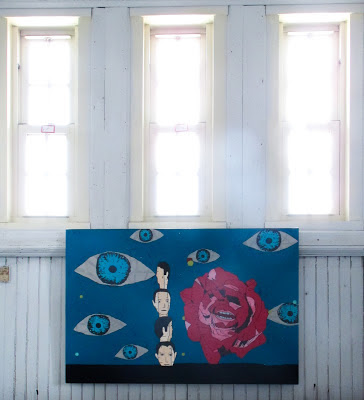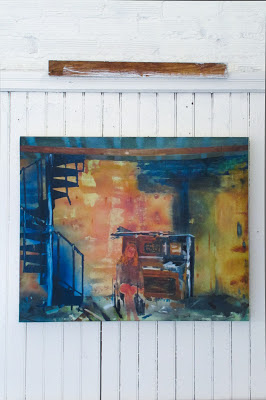and why they think you should do it too.
Two weeks ago (May 9-13), the cutLog Art Fair, sponsored by the Franco-German television network ARTE, was held at the Clemente Soto Velez Cultural & Educational Center on New York’s Lower East Side, featuring three floors and 45 galleries chock full of contemporary art exhibits, installations, performances and other art pieces.
The same weekend, in a corner of the building’s fifth floor, three Academy artists–Sarah Beatty (MFA 2012), Jonathan Beer (MFA 2012, Fellow 2013) and Lily Koto Olive(MFA 2013)–hosted a pop-up art exhibit, featuring their own pieces along with work by six other artists: 2013 Academy graduates Meg Franklin, Elizabeth Glaessner and Nadene Grey, as well as DC-based artist Lee Gainer, Boston-based Christopher Mir and Christine Gray, who is represented by New York’s RARE Gallery.
Beatty hosted the exhibition in the studio space that she has rented at the center since January. Because she was in the midst of curating another show Finding Space: Artwork Inspired by Urban New York, she asked Beer and Olive—who together run the art criticism website Art-rated—to curate the show, called 501-9 after Beatty’s studio number. Though it was not associated with cutLog, it benefited from the hundreds of art lovers the fair brought to the Clemente building that weekend. “The decision to have it was about – ‘Hey, why don’t we just jump on this opportunity,’” Olive said. “It seemed perfect for a pop-up art show.”
Beer and Olive were excited to bring together work by their peers at the Academy with work by Grey, Mir and Gainer, which they believed to be “in dialogue.” They handpicked the pieces, which ranged widely in size and included a piece by Beer that hung from the ceiling, covering a closet door like a tapestry.
Though the show was not defined by a particular theme, Beatty, Beer and Olive saw connections between the pieces. “Almost all the artists in the show are interested in communicating something about what it is to be contemporary and the conditions of contemporary life,” Beer said. “That’s a big part of who we chose and why.”
Olive observed that many of the pieces seemed to include “unique depictions of light,” even though that was a conscious decision. “In Christine Grey’s piece, she has these two hands holding an open space, and the hands are made of snakeskin and there’s kind of a little window cut out and it’s this bright blue sky with a bird flying through it, so it’s kind of like this warm bright feeling,” Olive said. “In Meg’s pieces, they’re darker palette with a kind of subdued glowing luminents. Jon had kind of a similar aesthetic, and Sarah was painting some architecture at nighttime. [Light] was a key part of all the paintings.”
Beer said the biggest challenge came with arranging the show in the space, because up until that point, no one had seen all the art together in one room. On the whole, all three were pleased with the way the pieces fit together—and with the number of visitors who followed their signs and ventured up to the fifth floor. “No matter what, people do come to see art–even up on the fifth floor in the darkest corner,” Beatty said. “People still made their way up there–it surprised me.”
Beatty, Beer and Olive see the experience of curation as an empowering one for artists. “We all show our work, we show in galleries—we have that experience,” Olive said. “But it feels good to go, ‘You know what?’ I feel like doing this.’ We can curate the show, we don’t have to sit around and wait. If something sells, we can control it all. It’s more of a powerful position for the artist to be in, honestly.”
Asked what advice she’d give to artists interested in trying their hand at curating, Beatty said, “Just try it. Look for opportunities and seize on them yourself. No one’s going to make an opportunity for you, so why not see what you can do?”




